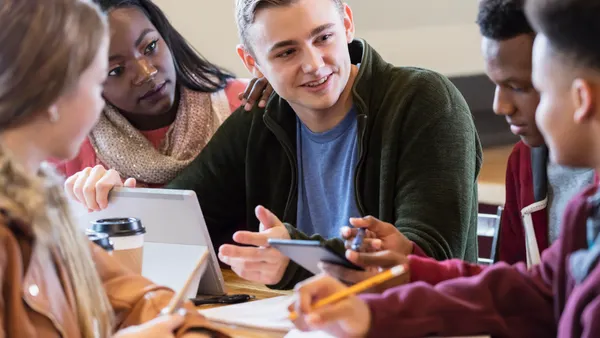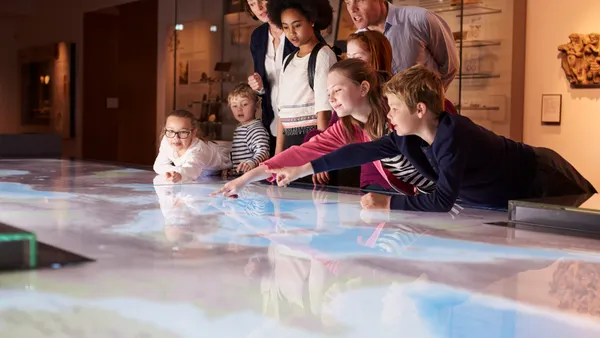Dive Brief:
- An Edutopia analysis of a first-person narrative by high school math teacher Bill Hinkley, originally published by EdSurge, examines the educator's process of working with a researcher to learn whether his method of spaced practice, or breaking lessons into shorter sessions, was effective.
- Hinkley and researcher Dr. Yana Weinstein-Jones were paired via a program facilitated by educational research organization The Learning Agency, with Weinstein-Jones collecting informal data and notes students kept over months on the practice the duo chose to experiment with: spaced practice.
- The findings suggested that student learning increased due to students having more time to think about and express what they were learning, as well as the spaced practice method's linking of tools learned from one lesson to the next.
Dive Insight:
When developing curriculum and adopting new models or approaches, chief academic officers may benefit from working hand-in-hand with researchers at the college and university level. While partnerships between the two are not new, they may take some additional effort from school districts to arrange — but the added insight can be invaluable in the classroom.
Stanford University’s Graduate School of Education in Palo Alto, Calif. has worked for more than a decade with the San Francisco Unified School District, for example, conducting projects that put the university’s research into classroom practice faster. The university has also expanded its reach, launching a partnership with nine nearby school districts in the Stanford-Sequoia K-12 Research Collaborative in 2018.
School districts and universities that work together can produce positive results, as the two “provide each other with resources and benefits in research and practice,” wrote Lily L. Dyson in the Autumn 1999 issue of Canadian Journal of Education.
In some cases these partnerships may take place over the school year, while others can happen during the summer, with educators taking extended learning classes at colleges to strengthen curriculum for K-12 students. Educators on both sides should keep certain things in mind before embarking on these partnerships, however, as gaps in the research base can still present challenges, as Sharon Ng and Esther Chan noted in research published in Global Studies of Childhood.
Common challenges include the often different natures of the public school and university worlds, with different cultures, as well as the need for leaders on both sides — from superintendents to university deans — to visibly support the partnership.











